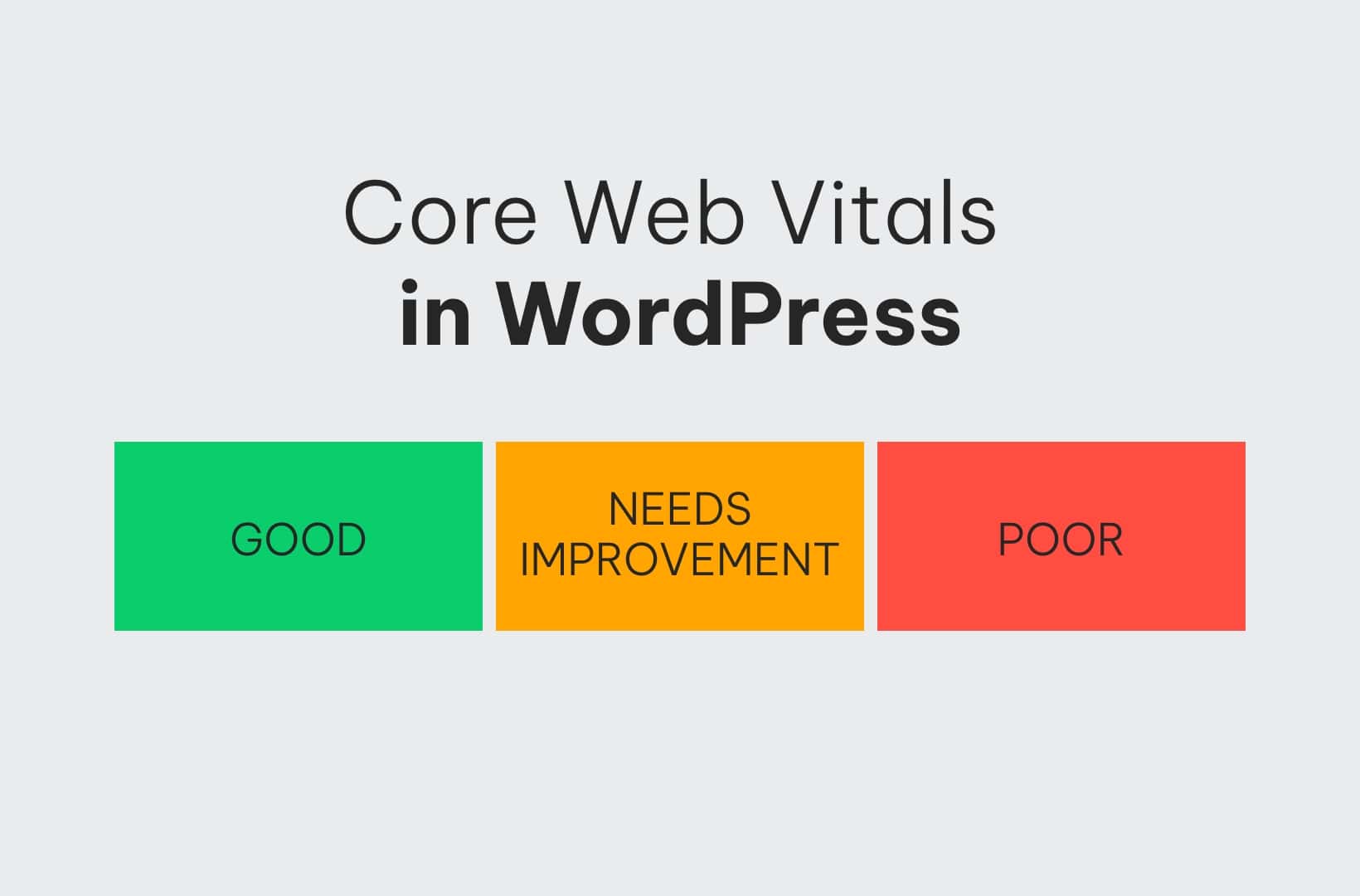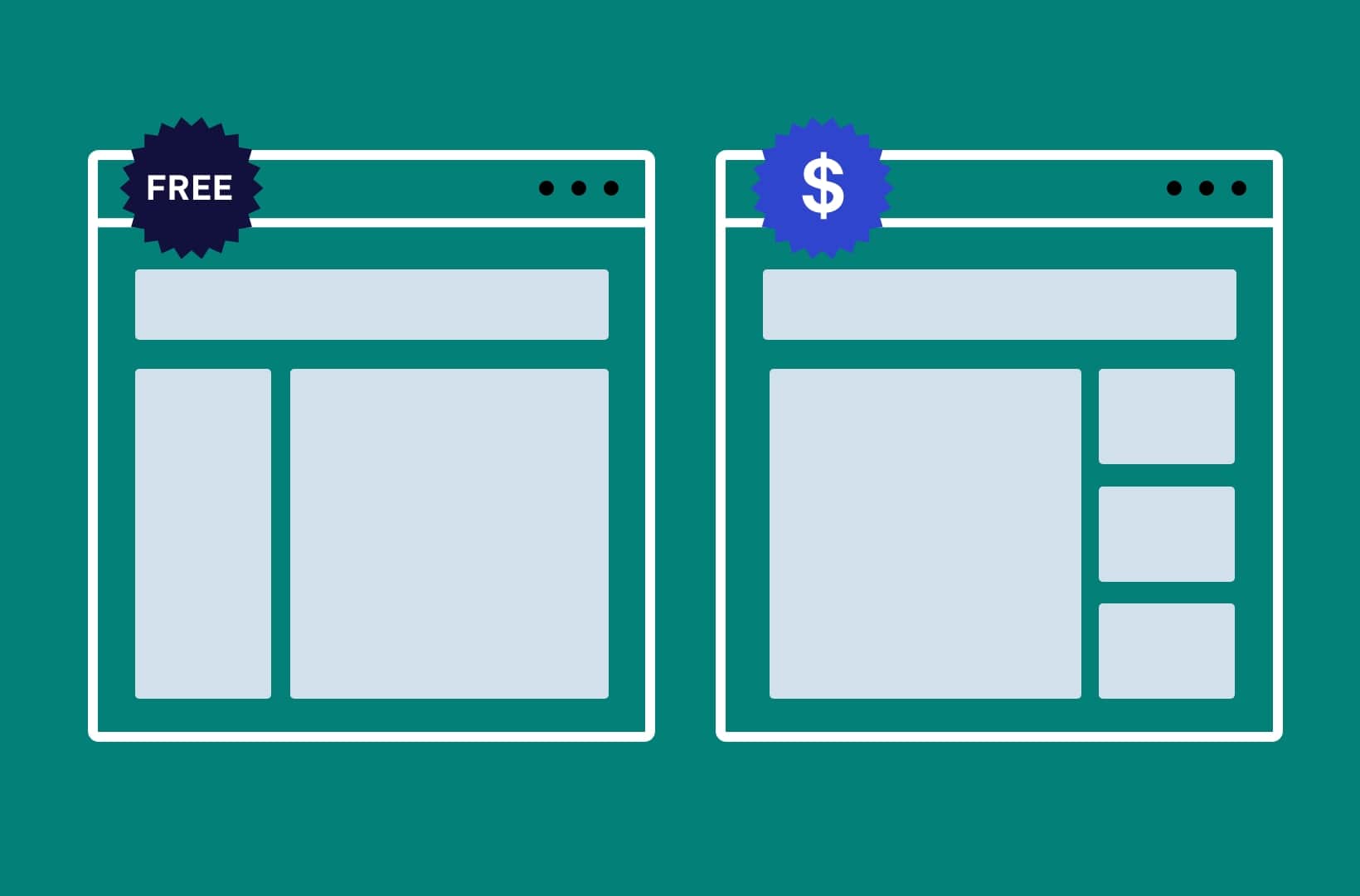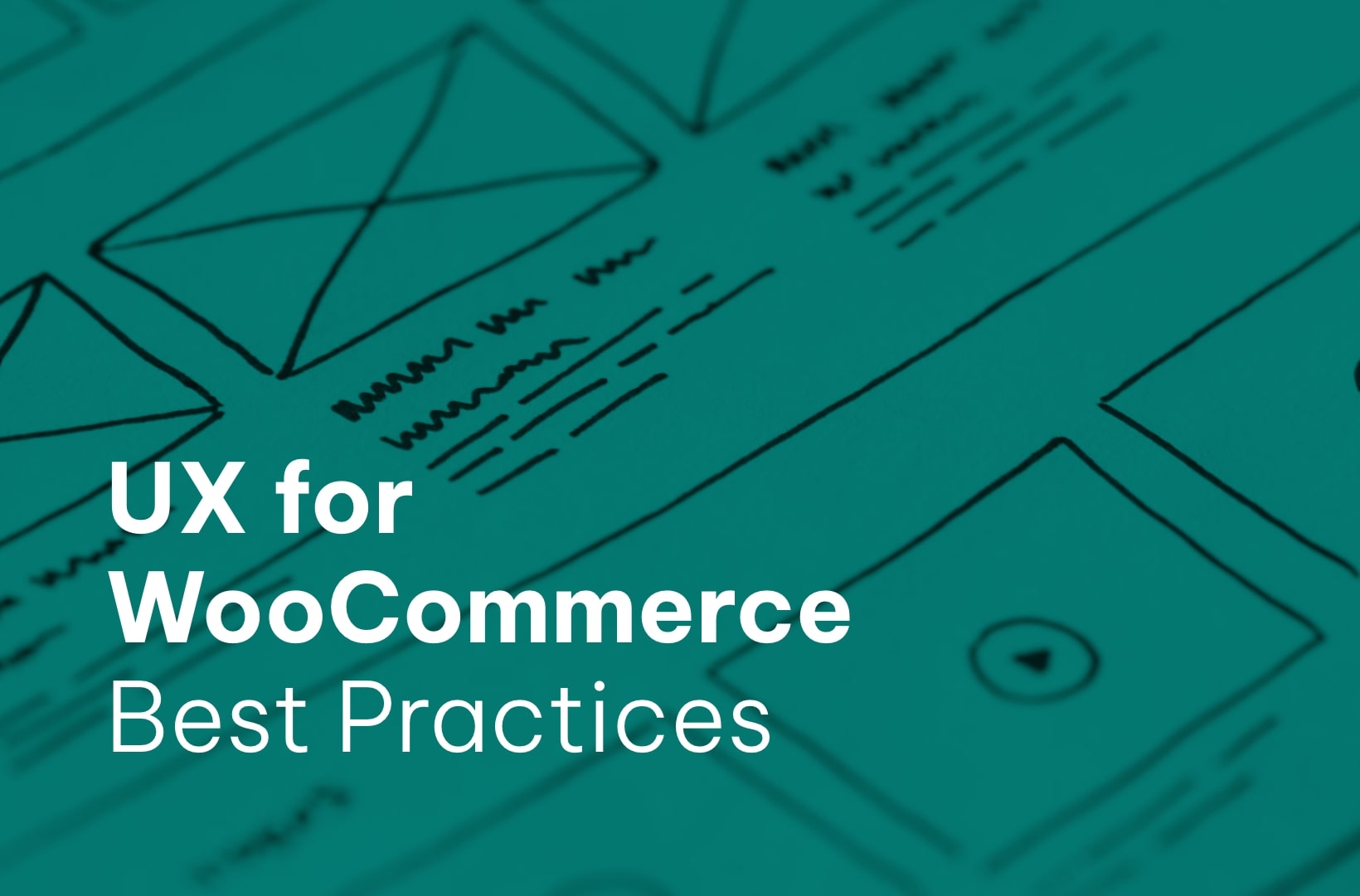The Ultimate Guide to Core Web Vitals in WordPress

Every WordPress website owner, developer, or digital marketer knows the significance of optimizing website performance. Still, few realize the seismic shift in the SEO landscape brought about by Google’s Core Web Vitals (CWV).
If you’re keen to step up your site’s user experience, SEO ranking, and overall growth, it’s time to master these essential metrics.
Understanding and applying CWV to your WordPress website is more than just a strategic move, but without the right guidance, these metrics can seem like an impenetrable maze.
This is where our ultimate guide to Core Web Vitals in WordPress can help.
In this article, we delve into the fundamentals of Core Web Vitals, including First Input Delay (FID), Largest Contentful Paint (LCP), and Cumulative Layout Shift (CLS). We’ll also provide practical advice on how to assess your site’s performance and actionable steps to enhance your site for these crucial metrics.
Lastly, we’ll explore how Saucal, with its expert WooCommerce development and team extension services, can help you optimize your site for Core Web Vitals, improving your site’s rankings, organic traffic, and overall user experience.
So, get ready to amplify your WordPress website’s user experience and SEO performance!
Understanding core web vitals in WordPress and why they matter
Core Web Vitals are a set of performance metrics that Google introduced to measure and evaluate the user experience on websites. They are part of Google’s Page Experience signals, which also include mobile-friendliness, safe browsing, HTTPS, and intrusive interstitial guidelines.
The three Core Web Vitals metrics are First Input Delay (FID), Largest Contentful Paint (LCP), and Cumulative Layout Shift (CLS).
- The FID measures the time it takes for a page to become interactive.
- The LCP measures the time it takes for the main content of a page to load.
- The CLS quantifies how much unexpected layout shift of visual page content occurs on a page.
Google introduced Core Web Vitals because they believe that these metrics provide a holistic picture of the quality of user experience on a webpage. They capture the most critical aspects of user experience, such as load time, interactivity, and visual stability.
Importance of core web vitals for WordPress
Core Web Vitals are essential for WordPress websites because they directly impact user experience and SEO. Optimizing for these metrics can lead to a better user experience, which can result in higher search rankings and increased organic traffic. Here’s what Kostas Seresiotis, Senior Product Engineer at Saucal, had to say about the topic:
Improving CWV scores directly correlates to user engagement, retention and results to more conversions and better ROI in general, so unsurprisingly it is the number 1 area to focus on right after your site is up & running.
It’s important to note that Core Web Vitals apply to all web pages, not just WordPress websites.
However, given the popularity of WordPress as a content management system, understanding and optimizing for these metrics is particularly crucial for WordPress site owners and developers, because:
- Google uses Core Web Vitals as part of its ranking algorithm. If your WordPress site scores well on these metrics, it’s more likely to rank higher in search results. This is because Google prioritizes websites that provide a good user experience.
- Core Web Vitals are interconnected with other key SEO factors. A mobile-friendly site with fast page speed is more likely to have a good LCP. Or, a site with high-quality, user-focused content is more likely to engage users, reducing the likelihood of quick exits that could negatively impact FID.
Considering these two crucial factors, let’s look at how you can measure and optimize Core Web Vitals on your WordPress site.

Get familiar with the three core web vitals
Google’s Core Web Vitals revolve around three pillars: First Input Delay (FID), Largest Contentful Paint (LCP), and Cumulative Layout Shift (CLS). Each one focuses on a unique facet of user experience, and collectively, they shape your WordPress site’s overall performance.
First Input Delay (FID)
First up is FID. Think of it as a measure of your website’s first impression—the time it takes for your webpage to start responding to a user’s first interaction. Whether it’s a click on a navigation link or a tap on a button, FID captures the delay between the user’s input and the site’s response.
FID is critical for understanding and improving a website’s interactivity and responsiveness, because interactivity is a key aspect of user experience.
A site that is quick to respond to user interactions feels more intuitive and user-friendly, while a site that takes a long time to respond can be frustrating to use.
A low FID is indicative of a poor user experience. If users click on a button or try to interact with your site and nothing happens, they may perceive your site as unresponsive or slow. This can lead to user frustration, and in the worst-case scenario, users may abandon your site altogether.
And it’s not just about user experience; FID also holds weight in Google’s eyes. As part of the Core Web Vitals, Google uses FID as a ranking factor. This makes it a key concern for anyone looking to improve their site’s interactivity and, ultimately, its search engine performance.
Largest Contentful Paint (LCP)
Largest Contentful Paint, or LCP measures the time it takes for the largest visible content element on a webpage to load. This could be an image, a video, or even a block of text—essentially, it’s the largest piece of content that the user sees in their viewport.
Why does LCP matter? Because it directly affects a user’s perception of your site’s loading speed and overall performance. The quicker your site can paint its largest content element, the faster your site feels to your users.
A low LCP score signifies fast-loading pages, leading to a better user experience. In contrast, a high LCP score suggests slow-loading pages, which can result in user frustration and high bounce rates.
A good LCP time makes your website more appealing to both users and search engines.
Cumulative Layout Shift (CLS)
The final Core Web Vital is CLS, a measure of visual stability on your webpage. It quantifies the unexpected shifting of visible elements during page load. Imagine reading an article when, suddenly, the text moves and you lose your place—that’s what a high CLS score can cause.
CLS is essential for preventing user frustration stemming from unexpected layout changes. A high CLS score can make your website feel chaotic and disorganized, making it hard for users to interact with your site. Lowering your CLS score can improve the user experience by providing a visually stable environment, free from surprise content shifts.
Just like the other Core Web Vitals, Google factors CLS into its ranking algorithm, underscoring its importance in maintaining an optimized, user-friendly WordPress site.
Measuring core web vitals on your WordPress site
Before you can improve your site’s Core Web Vitals scores, you first need to measure them. Testing and measuring these metrics is crucial for identifying areas of improvement and optimizing your website’s performance.
Thankfully, there are several tools and techniques available to help website owners and developers measure their site’s performance based on these metrics, such as:
- Google Search Console: This tool provides a Core Web Vitals report that identifies pages on your site with poor performance. It groups URLs into ‘Good’, ‘Needs Improvement’, and ‘Poor’ categories based on their FID, LCP, and CLS scores. This report is a great starting point for identifying pages that need optimization and tracking improvements over time.
- Google PageSpeed Insights: It analyzes a webpage’s performance on both mobile and desktop devices and provides a score between 0 and 100. It also offers recommendations for improving performance, including suggestions for optimizing Core Web Vitals.
- Lighthouse: Lighthouse is an open-source tool by Google that audits website performance, including Core Web Vitals. It provides a detailed report with performance scores and recommendations for improvement. You can run Lighthouse in your browser, from the command line, or as a Node module.
- WebPageTest: This allows you to run advanced performance tests on your website and obtain detailed insights into Core Web Vitals. It’s worth noting that WebPageTest runs Lighthouse and PageSpeed Insights internally, offering a comprehensive analysis of your site’s performance.
Each Core Web Vitals metric has a scoring system that indicates the quality of user experience it provides.
| CWV | Good | Needs improvement | Poor |
| LCP | Less than 2.5 secs | Between 2.5 to 4 secs | More than 4 secs |
| FID | Less than 100 millisecs | Between 100 to 300 millisecs | Over 300 millisecs |
| CLS | Less than 0.1 | Between 0.1 to 0.25 | More than 0.25 |
Optimizing WordPress for better core web vitals scores
Now that we’ve thoroughly explored the concepts of Core Web Vitals, it’s time to apply this knowledge and turn it into action. Achieving better CWV scores involves optimizing your WordPress website to enhance performance and the overall user experience.
Here are some practical, actionable tips and techniques that will help you do just that. Ready to transform your WordPress site’s performance?
Content and design optimization strategies
Optimizing your website’s content and design is more than just a visual appeal or readability matter—it directly impacts your Core Web Vitals scores. By refining these aspects, you can significantly enhance your site’s loading speed, interactivity, and visual stability. Let’s explore a few key strategies that can lead to substantial improvements in your WordPress site’s performance.
Image optimization
Images can make or break your LCP scores. Efficient image handling ensures they enrich your content without sacrificing performance. Using proper image formats, compressing your images, and incorporating alt text help streamline your site’s loading process.
Additionally, adopting lazy loading, a technique that delays the loading of images until they’re about to enter the viewport, can greatly improve your page load speed and improve conversions, especially on your checkout page.
Minimizing CSS and JavaScript
Your site’s interactivity and FID scores can be affected by render-blocking resources such as CSS and JavaScript. By minimizing and optimizing these elements, you allow the browser to quickly render the page, reducing the time before it becomes interactive for users.
Font optimization
While custom fonts can make your site stand out, they can also slow it down and negatively impact your LCP scores. One way around this is to use system fonts that are already available on most devices, eliminating the need for additional loading. If you prefer using custom fonts, consider optimizing them. Techniques such as font compression and serving fonts locally can significantly reduce their load time.
Reducing layout shifts
Unstable layouts can lead to unexpected content shifts, increasing your CLS score. Aim for a stable layout to improve visual stability This can be achieved by allocating space for dynamic content, ensuring media dimensions are specified, and avoiding inserting new content above existing content, unless in response to user interaction.
While these strategies offer a solid starting point, it’s important to remember that content and design optimization for Core Web Vitals is an ongoing process. There’s a world of tactics out there, and staying up-to-date with the latest techniques and developments will ensure your WordPress site maintains top-notch performance and a great user experience.
Mobile optimization techniques
Today, mobile devices have taken center stage in internet browsing. With a significant portion of website traffic originating from smartphones and tablets, it’s clear that mobile optimization is no longer an option but a necessity.
Google, recognizing this trend, now prioritizes mobile-friendly websites in its search rankings, further underlining the importance of mobile optimization for your Core Web Vitals scores.
Responsive design
At the heart of mobile optimization is responsive design. This entails a website’s ability to adjust its layout and content to fit various screen sizes, ensuring a seamless browsing experience across different devices.
For WordPress sites, this could mean selecting a responsive theme from the get-go or customizing your existing theme to be responsive. Doing so ensures your website doesn’t just look good on a desktop, but provides an equally engaging experience on mobile screens, ultimately leading to improved Core Web Vitals scores.
Mobile-friendly plugins
Plugins are an integral part of any WordPress site, offering a wide range of functionalities. However, not all plugins are built with mobile devices in mind. Some might significantly slow down your website when accessed from a mobile device, negatively impacting your CWV scores.
Choosing mobile-friendly plugins or optimizing existing ones can ensure your WordPress site performs well on all devices. Remember, every millisecond counts, so the faster your plugins work on mobile, the better your performance metrics.
Long-term strategies for core web vitals success
While short-term tactics can boost your Core Web Vitals scores, the key to sustained success lies in a long-term, committed approach.
Continual monitoring and optimization of your website’s performance are essential to maintain those high scores and ensure a consistently positive user experience.
- Performance audits should become a regular part of your routine. The tools and techniques mentioned in the “Measuring Core Web Vitals” section are not just for one-time use.
- Implementing regular check-ups on your site’s performance can alert you to any issues before they impact your Core Web Vitals scores.
- New optimization techniques and best practices are emerging regularly, since the digital landscape is always evolving. Staying informed about these developments will equip you with the knowledge to continually improve your Core Web Vitals.
Having said that, optimization isn’t a one-and-done process. It’s about adopting an iterative approach, making incremental improvements over time. Small, regular enhancements can collectively lead to significant improvements in your Core Web Vitals scores.
But let’s face it, maintaining a high-performing WordPress website can be a challenging task, especially when you’re also trying to run your business.
That’s where a trusted WordPress development partner comes into play.
A reliable WooCommerce Expert, like Saucal, can take this task off your hands, providing you with expert assistance in navigating the intricacies of Core Web Vitals.
Saucal’s expert WooCommerce development for improved core web vitals
With our Expert WooCommerce Development services, we focus on transforming your online store into a high-performance asset, ensuring an optimal Core Web Vitals performance and an unmatched user experience.
Our key strengths are:
A team of certified WooExperts
Our team brings a wealth of knowledge and expertise to your project and provides top-notch development services to build, enhance, and maintain your WooCommerce website, ensuring a seamless and efficient user experience.
We stay up-to-date with the latest optimization techniques and best practices for Core Web Vitals, ensuring that your website always performs at its best. Plus, we can help you identify and address CWV-related issues on your WooCommerce website, leading to improved user experience and potentially higher search rankings.
Unique methodologies and processes
At Saucal, we don’t just offer services, we offer solutions. Our unique methodologies and processes are designed to bring continuous improvement to your online store. We value transparency and flexibility, offering a variety of payment options and a transparent billing process to ensure you’re always in the loop.
Our credentials speak for themselves. As a Platinum WooCommerce Partner, we’ve worked with major WooCommerce sites, optimizing their hosting setups for ultimate success. Companies like Leggari, Lens Distortions, and Phlearn have trusted us with their WooCommerce websites, and we have consistently delivered results, optimizing their sites for key metrics leading to improved Core Web Vitals scores.
And there’s more!
Our Team Extension Services, Managed Upkeep and Support, and Skilled Virtual Team can complement your efforts to improve your WooCommerce website. If you’re after speed, our enterprise hosting solutions are specifically built to ensure your WooCommerce site is lightning-fast.
With Saucal at your side, you’re not just getting a service provider—you’re getting a partner dedicated to your success. So, if you’re ready to turbocharge your WooCommerce website’s performance and enhance your Core Web Vitals scores, reach out to Saucal today. Let’s start a conversation about how we can help your business soar.
Optimize your WooCommerce store’s Core Web Vitals scores
Mastering Core Web Vitals is vital for anyone who wants to take website performance seriously, and it’s especially necessary for eCommerce store owners whose sales rely on SEO rankings, site visibility, and providing a solid user experience to customers.
When your Core Web Vitals scores are in top shape, it unlocks the potential for improved organic traffic, which in turn results in increased conversions for your business. However, maintaining optimal CWV performance is an ongoing effort, one that yields long-term value for your online presence and success.
If your business runs on WooCommerce, Saucal’s Managed WooCommerce and Team Extension services can be a game-changer. With our expertise in monitoring and maintaining website performance over time, we can help keep your WooCommerce store’s Core Web Vitals scores at their peak.
We understand that every business has its unique needs and challenges, and we’re here to help. If you’re ready to elevate your eCommerce business to new heights, why not contact us? Let us know about your specific pain points and requirements and we’ll be in touch to let you know how we can help.
At the end of the day, we believe that your business deserves nothing less than optimal performance. So, reach out today, and start your journey towards success, together.



